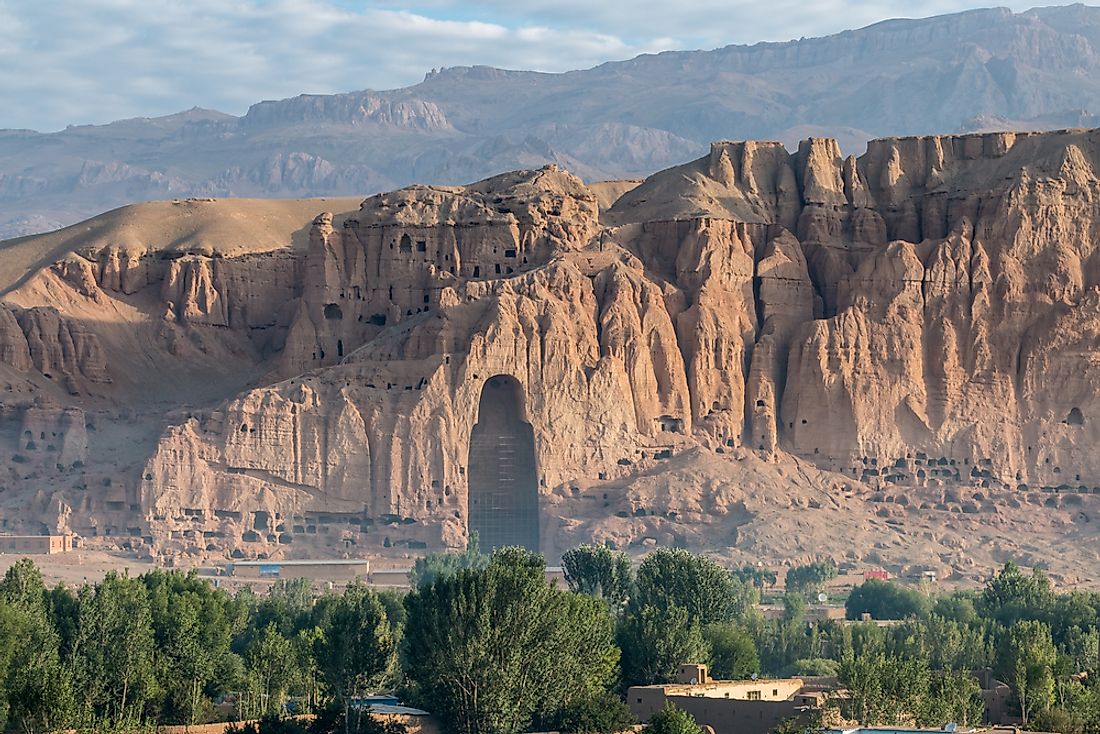UNESCO World Heritage Sites In Afghanistan

Afghanistan is a country in Central Asia. There are currently two UNESCO World Heritage Sites in Afghanistan, both of them cultural. They are the Minaret of Jam and the Buddhas of Bamiyan.
The Minaret of Jam
The Minaret of Jam, a UNESCO World Heritage Site in Afghanistan is situated in a remote and almost difficult to reach locale of the Shahrak District, Ghor Province, beside the Hari River. The 62-meter (203 ft.) high minaret was constructed around 1190 altogether of bricks and is well known for its intricate brick, stucco and coated tile decoration, which comprises of kufic and naskhi calligraphy, Quranic verses, and geometric patterns. Since 2013, the minaret stayed on the list of World Heritage in Danger, under genuine risk of disintegration, and was not effectively being preserved. In 2014, the BBC reported that the tower was fast approaching the threat of collapsing.
Threats To The Minaret
Erosion, water penetration, and surges, because of its nearness to the Hari and Jam rivers, are some of the biggest threats to the Minaret of Jam. Another risk is the quakes which happen quite often in the locale. The tower has been tilting, and adjustment work has been completed at different times.
After his 2002 visit, a British pilgrim and Member of Parliament Rory Stewart reported that marauders and illicit excavations have likewise harmed the archeological site around the minaret.
Buddhas of Bamiyan
The Buddhas of Bamiyan were amazing statues of the standing Buddha constructed in 507 AD and 554 AD, cut into the side of a cliff in the Bamyan valley in the Hazarajat district of central Afghanistan, 230 km northwest of Kabul, at an elevation of 2,500 meters.
Destruction By The Taliban
Unfortunately, the statues were destroyed by explosives over the course of weeks, beginning on March 2, 2001, by Taliban forces operating in Afghanistan. This process of destruction was carried out in stages. At first, the Buddha statues were damaged by anti-aircraft firearms and cannons targeted at the statues. Later, the Taliban put anti-tank mines at the base of the corners, so that when sections of rock broke off from artillery fire, the statues would be further demolished. They did not stop at this. The Taliban dropped men down the cliff face and set explosives into openings in the Buddhas. When one of the blasts was not able to destroy the face of one of the Buddhas, a rocket was dispatched that left a gap in the remaining parts of the stone head. In the end, though the statues could not be completely wiped out, they became hard to recognize that they were Buddha statues.
Restoration
Following fourteen years, on June 7, 2015, a Chinese adventurist couple Xinyu Zhang and Hong Liang filled the unfilled cavities where the Buddhas once remained with 3-D laser light projection technology. The projector utilized for the establishment, worth roughly $120,000, was given by Xinyu and Hong, who were disheartened by the annihilation of the statues. With the longing of paying tribute, they asked for consent from UNESCO and the Afghan government to do the task. Around 150 nearby individuals turned out to see the unveiling of the holographic statues on Sunday, 7 June 2015.
UNESCO World Heritage Sites In Afghanistan
| UNESCO World Heritage Sites in Afghanistan | Year of Inscription |
|---|---|
| Buddhas of Bamiyan Valley | 2003 |
| Minaret of Jam | 2002 |











